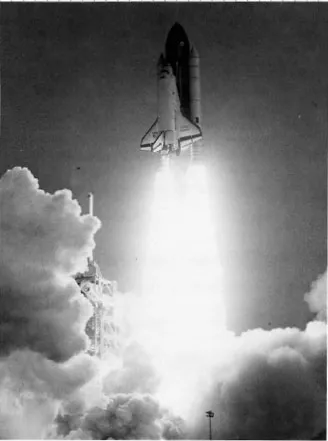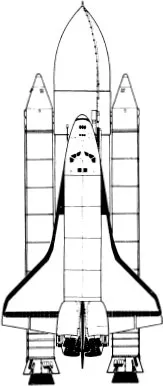
eBook - ePub
Space Mathematics
Math Problems Based on Space Science
Bernice Kastner
This is a test
Condividi libro
- 192 pagine
- English
- ePUB (disponibile sull'app)
- Disponibile su iOS e Android
eBook - ePub
Space Mathematics
Math Problems Based on Space Science
Bernice Kastner
Dettagli del libro
Anteprima del libro
Indice dei contenuti
Citazioni
Informazioni sul libro
Created by NASA for high school students interested in space science, this collection of worked problems covers a broad range of subjects, including mathematical aspects of NASA missions, computation and measurement, algebra, geometry, probability and statistics, exponential and logarithmic functions, trigonometry, matrix algebra, conic sections, and calculus. In addition to enhancing mathematical knowledge and skills, these problems promote an appreciation of aerospace technology and offer valuable insights into the practical uses of secondary school mathematics by professional scientists and engineers.
Geared toward high school students and teachers, this volume also serves as a fine review for undergraduate science and engineering majors. Numerous figures illuminate the text, and an appendix explores the advanced topic of gravitational forces and the conic section trajectories.
Geared toward high school students and teachers, this volume also serves as a fine review for undergraduate science and engineering majors. Numerous figures illuminate the text, and an appendix explores the advanced topic of gravitational forces and the conic section trajectories.
Domande frequenti
Come faccio ad annullare l'abbonamento?
È semplicissimo: basta accedere alla sezione Account nelle Impostazioni e cliccare su "Annulla abbonamento". Dopo la cancellazione, l'abbonamento rimarrà attivo per il periodo rimanente già pagato. Per maggiori informazioni, clicca qui
È possibile scaricare libri? Se sì, come?
Al momento è possibile scaricare tramite l'app tutti i nostri libri ePub mobile-friendly. Anche la maggior parte dei nostri PDF è scaricabile e stiamo lavorando per rendere disponibile quanto prima il download di tutti gli altri file. Per maggiori informazioni, clicca qui
Che differenza c'è tra i piani?
Entrambi i piani ti danno accesso illimitato alla libreria e a tutte le funzionalità di Perlego. Le uniche differenze sono il prezzo e il periodo di abbonamento: con il piano annuale risparmierai circa il 30% rispetto a 12 rate con quello mensile.
Cos'è Perlego?
Perlego è un servizio di abbonamento a testi accademici, che ti permette di accedere a un'intera libreria online a un prezzo inferiore rispetto a quello che pagheresti per acquistare un singolo libro al mese. Con oltre 1 milione di testi suddivisi in più di 1.000 categorie, troverai sicuramente ciò che fa per te! Per maggiori informazioni, clicca qui.
Perlego supporta la sintesi vocale?
Cerca l'icona Sintesi vocale nel prossimo libro che leggerai per verificare se è possibile riprodurre l'audio. Questo strumento permette di leggere il testo a voce alta, evidenziandolo man mano che la lettura procede. Puoi aumentare o diminuire la velocità della sintesi vocale, oppure sospendere la riproduzione. Per maggiori informazioni, clicca qui.
Space Mathematics è disponibile online in formato PDF/ePub?
Sì, puoi accedere a Space Mathematics di Bernice Kastner in formato PDF e/o ePub, così come ad altri libri molto apprezzati nelle sezioni relative a Scienze fisiche e Astronomia e astrofisica. Scopri oltre 1 milione di libri disponibili nel nostro catalogo.
Informazioni
Argomento
Scienze fisicheCategoria
Astronomia e astrofisicaCHAPTER ONE
MATHEMATICAL ASPECTS OF SOME RECENT NASA MISSIONS

Launch of the Space Shuttle Challenger on
June 18, 1983.
Teachers of mathematics, like most adults in today’s world, can hardly fail to be aware of the rapid development of space science. We realize that the spectacular achievements of the space program have depended heavily on mathematics—mathematics that is generally complex, advanced, and well beyond the level of most secondary school curricula. Even though this perception is valid, there are many significant aspects of space science that can be understood using only high school mathematics.
The exploration of space naturally uses the tools and techniques of astronomy. Astronomy in turn is gaining much new information as a result of sending scientific probes and satellites beyond Earth’s atmosphere. Because astronomy has stimulated the growth of many of the concepts and methods of mathematics, the high school teacher will find here much that is familiar. However, in some instances the way mathematics is used to solve real-life problems is rather different from methods emphasized in school courses.
In this opening chapter, we shall examine several recent achievements of the National Aeronautics and Space Administration and identify mathematical ideas and questions that may be of interest to high school teachers and students. When appropriate, we will refer to a problem illustrating some aspect of the subject and worked elsewhere in the book.

Fig. 1.1
The Space Shuttle
The Space Shuttle (Fig. 1.1) is a true aerospace vehicle—it takes off like a rocket, operates in orbit as a spacecraft, and lands like an airplane. To do this takes a complex configuration of three main elements: the Orbiter, a delta-winged spacecraft-aircraft, about the length of a twin-jet commercial airliner but much bulkier; a dirigible-like external tank, the only expendable element, secured to the Orbiter’s belly and containing two million liters of propellant (Chapter 4, Problem 5); a pair of reusable solid rocket boosters, each longer and thicker than a railway tank car and attached to the sides of the external tank.
Each Space Shuttle is meant to be just one element in a total transportation system linking Earth with space. In addition to providing for continued scientific investigations by transporting such systems as the Spacelab and the Large Space Telescope, recently renamed the Edwin P. Hubble Space Telescope, into orbit (Chapter 3, Problem 4), the Space Shuttles are also expected to carry the building blocks for large solar-power space stations or huge antenna-bearing structures for improved communication systems (Chapter 4, Problems 9 and 10). Structures that would be too fragile to stand up under their own weight on Earth will be folded up in the Shuttle’s cargo bay and assume their final shapes in the micro-gravity environment of space. The Shuttle will also be capable of carrying a work force of seven people and returning them home after the completion of their work.
One of the most basic mathematical problems raised by the launching and controlling of a Shuttle or any other spacecraft is that of describing its motion. This problem requires the ability to specify the position of the spacecraft’s center of mass and its attitude (orientation) and to describe changes in both during flight. The specification of position and attitude can be accomplished by setting up suitable coordinate systems (Chapter 7, Problem 10). Instruments to determine a spacecraft’s attitude are most effectively referenced to a spacecraft-based coordinate system, whereas...